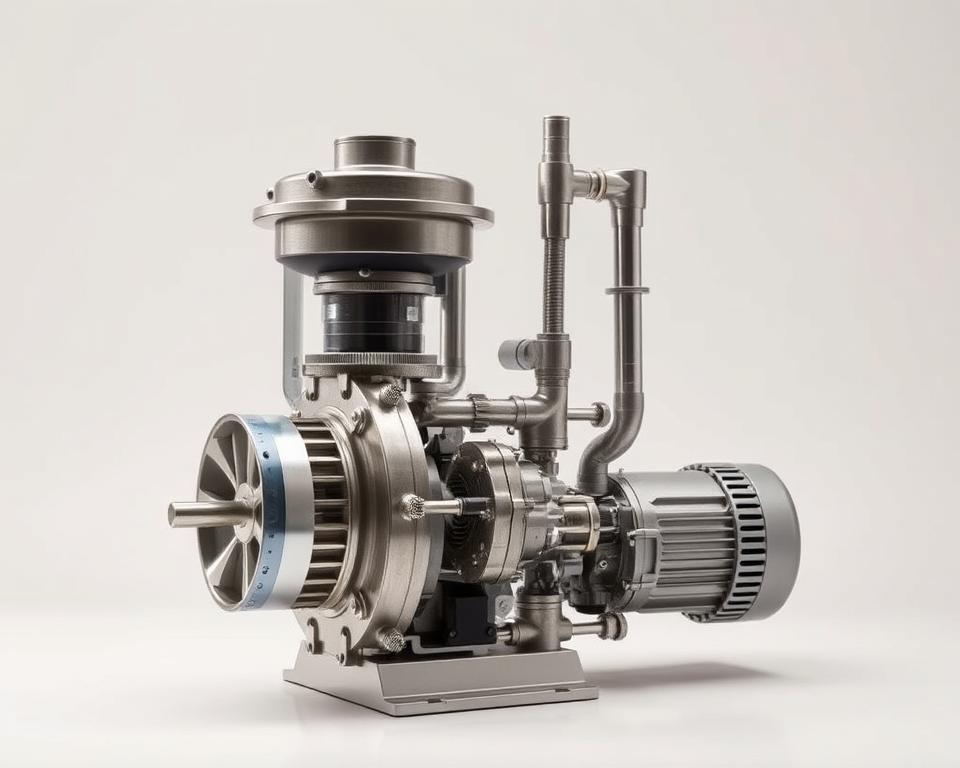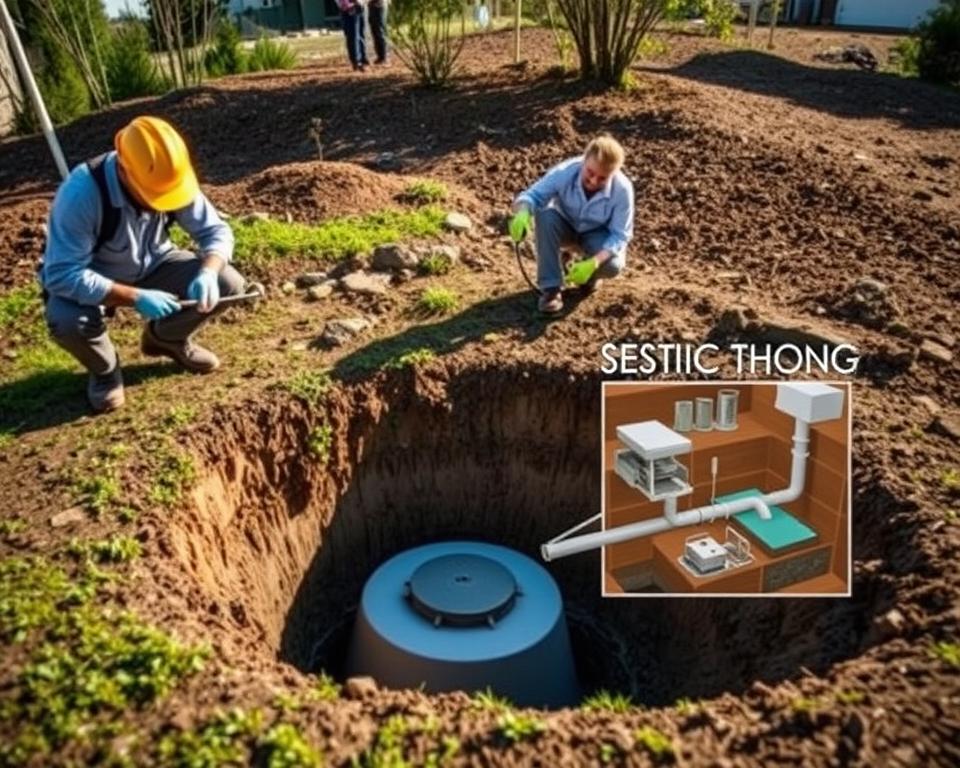Waste Container with Suction Setup Guide & Suggestions
Did you know over 21 million households in the United States use sewage systems for wastewater? These structures are crucial to keeping residences safe and sanitary. Knowing how a septic tank with pump works is vital for everyone’s health and the surroundings. It’s crucial to establish and upkeep these structures properly to avoid large fixing fees and safety issues.
This manual offers important tips for homeowners on waste system care using septic cleaning companies near me. We’ll discuss how these structures work and when they could need repair. Our objective is to impart you the understanding to keep your waste system operating efficiently. Let’s dive into the main parts, how to set up them, and key care advice for a healthy septic system.
Understanding Sewage Systems
Septic systems are key for houses not linked to urban drainage. Knowing about sewage tanks is crucial for residents using them. These tanks handle and eliminate domestic waste, keeping effluent and groundwater safe.
What is a Septic Tank?
A sewage tank is a main part of sewage systems, made from materials like cement, fiber-reinforced polymer, or polyethylene. It divides solid waste and effluent through gravity. Solids sink to the floor, and effluent become ready for more processing on upper layer.
Grasping how waste systems work reveals why they need to be set up correctly for them to operate well.
How Does a Septic Tank Work?
Sewage tanks work by using natural processes. Wastewater enters and solids collect at the base. Grease ascends to the surface, making a grease layer. The intermediate liquid travels into the absorption field for more purification.
Understanding sewage tanks aids property owners understand their importance in keeping residential areas healthy.
Significance of Routine Care
Keeping sewage tanks cared for is very vital. Inspecting them every 3 to 5 years can stop big issues and conserve money. The dimensions of your home and how much fluid you use affects how often you need to examine them.
Neglecting your structure can pollute the land and be a danger. Regular maintenance guarantees your waste system remains longer and keeps waste disposal safe.
Parts of a Sewage Tank with Suction Structure
A sewage tank system has crucial parts that work together to manage sewage well. This septic components overview explains the central components and their roles. A good pumping system guarantees the whole setup works better.
Waste Tank Summary
The primary parts of a septic system are:
- Sewage conduit joining your house to the container
- Septic tank for effluent storage and primary processing
- Drain field for further purification and distribution
- Earth around the absorption field, crucial for purifying waste
Every septic tank component is vital for the system’s efficiency and long duration. The waste tank lets waste settle and go through air-based treatment. The ground around it helps purify the effluent further.
Suction Setup Performance
The pumping structure is crucial for processing effluent well. It transfers processed sewage from the sewage tank to the drain field or waste area. It can operate with:
- Natural force, demanding a suitable area level
- Power or fuel energy to start the device
Knowing how the pumping structure operates aids you understand when it needs upkeep. Purging and elevators facilitate to check and clean the setup, keeping it efficient.
Sewage Tank with Pump System
It’s vital to know the different types of septic pump systems for good operation and long duration. Each variety of pump has its own function. This segment talks about the various pumps, how to pick the correct one, and where they’re utilized.
Varieties of Waste Pumping Setups
There are many kinds of septic pump systems. Here are the main ones:
- Wastewater Movers: These devices move treated wastewater to a drain field or another spot.
- Sewage Elevators: They handle unprocessed effluent from basement areas to higher up.
- Sewage Pulverizers: These machines pulverize sewage into fluid for easier transport.
Selecting the Appropriate Pump
When picking a waste pump, think about these points:
- Know the machine’s needed use for your system.
- Determine the peak flow rates your system can process.
- Compute the total hydraulic head (TDH) to locate the appropriate machine size.
Thinking about these aspects guarantees your machine works well and endures.
Uses and Factors
Various pump types are utilized for different needs in structures. Some uses comprise:
- Dispensing sewage in drain fields.
- Moving waste to the urban drainage.
- Helping with discharge in underground lavatories and cooking areas.
Knowing these functions helps residents and contractors make informed selections. This assures the pump keeps the structure reliable and working right.
| Variety of Pump | Purpose | Ideal Function |
|---|---|---|
| Effluent Pump | Transfers processed effluent | Leach field spreading |
| Sewage Elevator | Manages untreated waste | Underground to aboveground transfer |
| Sewage Pulverizer | Grinds solids before pumping | Large debris scenarios |
Installation of Septic Tank Pumps
Installing a waste tank pump needs meticulous strategy and implementation. Understanding how to set it up correctly ensures the pump works well and lasts longer. It’s vital to get ready well and follow each phase during setup.
Setting Up for Waste Tank Pump Setup
Before starting, it’s crucial to examine the area and the tools needed. You should take into account:
- Site location: Check if the site is simple to approach and has the correct services.
- Permits: Ensure you have all the authorizations before beginning operations.
- Pump size: Select the right pump size for the reservoir and the amount of sewage.
Detailed Installation Process
To set up the waste pump properly, comply with a detailed manual. This guarantees you install it efficiently:
- Uncover around the sewage tank to find the pump’s access point.
- Extract the old machine by disconnecting the energy and pipes.
- Put in the new pump, ensuring it’s in the ideal location for performance.
- Rejoin the energy and pipes, checking they’re secure.
- Level the machine to prevent any problems later on.
- Cover the excavated site, verifying it’s easy to reach for upkeep.
Being meticulous during establishment helps prevent mistakes. Working with specialists like All In Site Services can be very helpful. Preparing well for sewage tank pump establishment means you’ll have a more reliable and smooth system.
Care and Upkeep for Your Sewage System
Keeping your sewage system in good order is crucial to its long life and operation. Routine care can avoid expensive fixes and guarantee your parts endure. It’s vital to upkeep your structure by doing frequent examinations and monitoring for any signs of trouble.
Frequent Examination Rules
It’s a good practice to inspect your septic system every three years. If your structure has automated elements, you should check it once a year. When you do checks, make sure to:
- Check for any bad smells near the reservoir or absorption field.
- Observe too much wetness or greenery in the drain field.
- Examine the pump and energy elements for corrosion or damage.
Symptoms of Pump Problems
Knowing the signs of septic pump problems can aid property owners prevent a lot of problems. Some usual symptoms include:
- Unusual sounds from the machine.
- A significant decrease in water flow.
- More backups or overflows in the system.
Advice for Prolonging Pump Life
There are methods to ensure your pump endures. Here are some tips to help:
- Use less water to lighten the burden on your system.
- Don’t put items that can’t decompose in the drain or commode.
- Make sure the energy to the pump is steady and doesn’t fail.
- Get professional help for sewage system upkeep to spot issues early.
| Upkeep Task | Interval | Importance |
|---|---|---|
| Frequent Examination | Annual for mechanical systems | Prevents major troubles |
| Pump Maintenance | As needed based on inspection results | Keeps the system running well |
| System Pumping | Every 3-5 years | Keeps the system healthy |
Expenses and Professional Services for Septic Tanks
Residents need to understand the expenses of sewage tank upkeep to keep their systems running well. Cleaning waste tanks charges between $200 and $600, according to the reservoir capacity and where you are located. It’s wise to allocate for these expenses since cleaning periodically helps avoid larger fees later.
There are also costs for sewage tank care, like frequent examinations and restorations. If you ignore these, your septic system may break down badly, needing a lot to fix or substitute. Grasping these expenses is vital to keeping your waste system operating efficiently.
Working with trusted pumping services, like All In Site Services, can save property owners money over time and preserve the ecosystem. These companies offer cleaning, routine inspections, and emergency assistance. By choosing these companies, residents can keep their septic systems in good shape. This reduces the chance of significant restoration costs later.



